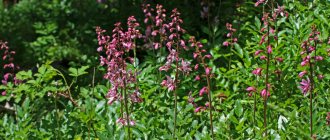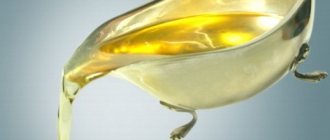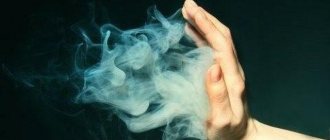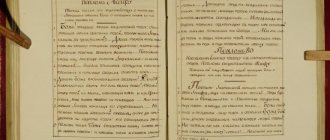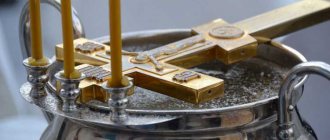Many people associate incense with church rituals. However, the range of its application is much wider. It can also be used exclusively for domestic purposes and used at home. This is an interesting and unique substance that requires close acquaintance. Often, even people who are closely familiar with its smell do not know what incense actually is.
Incense: what is it?
The resin from which incense is made has special aromatic properties unique to it. The smell of incense is difficult to confuse with another. The resin itself is obtained from a plant of the cistus family, which mostly grows on the Arabian Peninsula.
The technology for obtaining the treasured substance is simple: an incision is made in the body of the tree, from which the liquid is collected. Then it needs to be dried. In general, incense obtained by any means is used. Some particles are torn off directly from the bark, others are picked up from the ground on which it dripped. Hence the division of incense by type:
- ordinary,
- selective
Each individual piece of resin is not very durable and can be ground into powder quite easily with the help of basic tools. In fact, the small crumbs obtained in this way are called incense.
Due to the very limited quantity of the parent plant, incense is considered a very valuable material. However, its history has very deep religious roots. It was sacrificed back in the days of paganism and people’s worship of many deities. In sacrificial rituals it was an alternative to animal blood.
Incense has earned this attitude due to its aromatic properties. The strongest smell came from the resin when it was placed on hot coals. The fragrant smoke rose and went into the very sky, to where the gods lived. So people gave them a sign and conveyed their requests.
With the advent and development of Christianity, the substance was borrowed and was also actively used in church rituals. Legend says that incense was among the gifts of the Magi for the birth of Christ.
Among the inhabitants of Ancient Rus', aromatic resin was revered as a means of repelling evil spirits and evil spirits. They fumigated homes with it, and small particles were always carried with them along with the pectoral cross. Faith in his magical power was (and still is) unshakable.
In addition, completely earthly healing and even rejuvenating properties were attributed to incense.
- It was used to treat joint pain in Ancient Egypt by mixing it with other ingredients and rubbing it into the skin.
- To slow down the aging process and smooth the skin from existing wrinkles, incense was added as an ingredient to various cosmetic masks.
The traditions are still observed today. The cosmetology industry uses resin for the same purposes, using new preparation recipes.
At the forefront of aromatherapy
Aromatherapists use not only frankincense resin, but also essential oil, which is a dense yellowish liquid with a resinous balsamic aroma. It is obtained by steam distillation from incense.
Since ancient times, incense has been used in religious ceremonies. It was believed that it promotes immersion in prayer and detachment from worldly problems, that it is the aroma of meditation and immersion in the inner world. A person feels peace and tranquility.
According to modern aromatherapists, incense has antiseptic, warming, hemostatic and relaxing properties. Used for immunodeficiency and depression, asthma, colds, and flu. The aroma of incense normalizes sleep and helps eliminate mild depression. Sometimes it is added to products for aging, fading and wrinkled skin. To achieve this, conventional cosmetic preparations are enriched with frankincense oil. When applied to the skin, a burning and tingling sensation appears, which goes away after 1-2 minutes.
Photo: Rita Brilliantova
Kinds
Often, fumigating resin is divided into different categories according to the place of production. The most famous substance is produced on Mount Athos, in a monastery. Of the entire local assortment, Vatopedi is distinguished. It is believed that this church incense is one of the highest quality among all, explaining this with such properties as:
- Ability for long-term storage;
- Quite a long-lasting fragrance, even after stopping the fumigation procedure;
- Deep, rich aroma.
To make this product, the highest quality aromatic oils are used, which, in turn, are divided into floral, woody, artificial and natural groups.
In general, recipes for incense made on Mount Athos are kept in the strictest confidence, so almost no one knows for certain the secret of the wonderful aromas that it possesses.
It is worth mentioning several other types of incense that are respected throughout the world.
Athenian incense.
The name is directly related to the geographical location of its production. Unlike the above, it is made in private workshops. The main difference is in the concentration of aromatic components.
Jerusalem.
A distinctive feature is the appearance of the resin. The local product is presented not in the form of small pieces that are familiar to the eye, but in the form of plates, the thickness of which does not exceed three millimeters.
Monasteries of Lebanon
have also made their product famous by supplying the market with incense that has all the proper characteristics.
The secrets of production have reached Russian craftsmen
. Here production is established on the basis of traditions and recipes established on Mount Athos. Hence its aromatic and physical properties, which are especially valued in beneficial resins.
Although the principle of action is the same, dozens of varieties of incense are nevertheless distinguished. It also differs in price. Cheaper varieties have the same properties as expensive ones, but with much less impact.
Despite this, experts recommend that when choosing incense for use at home, rely on your own feelings and preferences. Each of the species is divided into several subspecies, and all this number of varieties has an individual aroma with special characteristics of the effect. Therefore, there is plenty to choose from.
You may be interested in an article about the benefits and harms of incense sticks. Also, in it we described which ones are better to choose and where to buy them.
Ceremony in the temple
Mikhail Nikolaevich Skaballanovich, Russian Orthodox theologian (1871-1931), explains the meaning of censing in the Explanatory Typikon:
“Incense prepares us for the service “with the stench of fragrance.” Spiritual, “mental” worship is preceded by this bodily, external one. Incense lifts the mind to the throne of God, where it goes with our prayers. In all centuries and among all peoples, the burning of incense was considered the best, purest material sacrifice to God, and of all the types of material sacrifice accepted in natural religions, the Christian Church retained only this and a few more (oil, wine, bread). And in appearance, nothing resembles the gracious breath of the Holy Spirit more than the smoke of incense.
Filled with such high symbolism, incense greatly contributes to the prayerful mood of believers and with its purely bodily effect on a person. Incense has an elevating, stimulating effect on our mood. For this purpose, the charter, for example, before the Easter vigil, prescribes not just incense, but an extraordinary filling of the temple with the smell from the placed vessels with incense.”
Manufacturers, prices, where to buy
Now Foods, Essential Oils, Frankincense, 30 ml Manufacturer: Now Foods
Country: USA
Average price 1,050 rub.
More details
Frontier Natural Products, Frankincense Resin Powder, 16 oz (453 g) Manufacturer: Frontier Natural Products
Country: USA
Average price 670 rub.
More details
Blue Pearl Incense Sticks, Incense 0.35 oz (10 g) Manufacturer: Blue Pearl
Country: USA
Average price 115 rub.
More details
The main thing is boswellic acids
Frankincense is a mixture of essential oil, resins and resinoids.
It contains 27-35% polysaccharides (D-galactose, L-arabinose and galactose and D-galacturonic acid), 60-70% terpenes (predominantly free and bound boswellic acid), and 5-7% volatile essential oils. When analyzing the resin and essential oil, more than 80 components were identified. The chemical composition of incense includes about 30% gum, up to 56% resin, which is a mixture of free boswellic acid C32H52O4 and associated with olibanoresen (C15H22O)n, essential oil is about 8% (α-thuyene, p-cymene and other components) , there are also bitter substances, mineral substances. Standardization of boswellia resin products is carried out according to the content of triterpenoids - boswellic acids, derivatives of α- and β-boswellic acid, more than 10 compounds in total.
Standardized industrial boswellia resin extracts should contain between 30% and 65% total boswellic acids.
|
Beneficial features
Cistus, a plant from which life-giving liquid is extracted, is listed in the Red Book as an almost exterminated plant and a rarity among the flora of the planet.
In its original form, resin is a very expensive and almost unavailable product. More and more often it is now made using coniferous trees - cedar, spruce and others. This does not prevent incense from remaining the owner of a large number of beneficial properties:
- Excellent in treating joint disease, rheumatism, arthritis;
- Helps fight colds;
- Has a beneficial effect on the skin, eliminating various rashes and inflammations;
- Used to treat urinary tract diseases;
- Helps strengthen the immune system;
- Successfully fights diseases of the gastrointestinal tract, disorders, ulcerative manifestations;
- Has a positive effect on the nervous system, calms;
- It has a good effect on the functioning of the brain in general. Added to some memory enhancing medications;
- Has antiseptic properties;
- In some cases it serves as an expectorant;
- It is even found in cooking, as an aromatic additive to some drinks.
Taking into account the huge list of incense’s abilities, it is actively used as an indispensable component of some preventive, medicinal and cosmetic products:
- tinctures,
- ointments,
- cosmetical tools.
Its aroma continues to be appreciated widely. Experts even subjected it to study, and in terms of its effect, they equated the substance used in fumigating premises to narcotic drugs, explaining this by the incredible energy charge that occurs in the body when inhaling the fumes.
The charge is so strong that a person begins to experience increased vigor, nervous tension is dulled, until complete peace. A person relaxes under the tide of a wave of pleasant sensations.
Excessive inhalation of smoldering resin can even lead to euphoria. The effect will be maximum if the process is accompanied by a small amount of alcohol. In this, experts see the danger of miraculous crystals. In addition, it turned out that their combustion products can cause an allergic reaction. It can be very difficult: with suffocation, dizziness and even memory loss.
Contraindications
Frankincense oil is quite safe and has no categorical contraindications, but you should not use it:
- for allergies;
- children under 3 years old;
- pregnant and breastfeeding women;
- with poor blood clotting.
With caution and only after consulting a doctor, it is allowed to use this remedy in old age (after 60 years) and with chronic diseases such as epilepsy, psoriasis, multiple sclerosis, Parkinson's disease, systemic lupus erythematosus.
How to use incense at home
Nevertheless, at home, church incense is used as a flavoring agent. To do this, it is not necessary to carry out church rituals in the home using censer and other elements.
All you need is some kind of brazier and coals, you can even take an ordinary spoon. It is important to maintain the required temperature so that the pieces of the substance smolder and smoke.
You can use incense at home every day; there are no restrictions on this, it all depends on your needs and the body’s reaction to incense. However, if you remember the advice of ancient monastic healers, you can find some recommendations on this matter:
- In case of illness, you need to inhale incense for 2 minutes, maybe a little less. Naturally, through the nose. It is also necessary to incense the entire apartment.
- The monks recommend putting about 2-3 small pieces of incense in a censer with coal. You should start censing with icons, of course, while reading a prayer to the Lord, the Mother of God or the saint to whom you are addressing. Afterwards you need to fumigate the entire apartment, reading the prayer “May God rise again,” and then the patient.
- If the patient himself fumigates the room with incense, then there is no need to additionally fumigate himself. In this case, place the censer and calmly inhale the aroma for several minutes (2-3).
It is believed that incense purchased in church is the most beneficial and dangerous for evil spirits.
Resin can be added to the censer as needed. There are varieties of incense that burn out faster. The secret of the procedure is that the lower the temperature of the heated resin, the finer the smell.
Hair care
Frankincense oil strengthens hair, gives it strength and shine. The active substances of the oil nourish the hair follicle, penetrate inside the hair, strengthening and moisturizing it. A major role here is played by resinous substances that predominate in the composition of the product. Frankincense extract eliminates dandruff, dry scalp and prevents split ends.
The easiest way to use frankincense ether is aromatherapy. You need to apply 3 drops of oil to a comb every day and gently comb your hair from roots to ends for 5 minutes, distributing the product over the entire length. After this procedure, the hair becomes smooth, acquires shine and a pleasant aroma.
A few drops of frankincense oil on a wooden comb will smooth and scent your hair.
When washing your hair, it is recommended to add a little frankincense oil to your care products (shampoos, masks, conditioners).
A daily scalp massage with a mixture of alcohol (50 ml), lavender oil (10 drops) and frankincense oil (5 drops) will help prevent hair loss.
Regularly massaging your scalp using frankincense oil will speed up hair growth, making it stronger and shinier.
Eliminate excessive hair loss
A common problem for girls is excessive hair loss, which is usually caused not only by a lack of vitamins, but also by improper care. You can solve this like this:
- Mix jojoba oil (3 tablespoons) with lavender oil (20 drops), rosemary (5 drops) and frankincense (2 drops).
- Generously lubricate your hair with the mixture, wrap it with film and cover with a warm towel.
- Leave for 30 minutes, then rinse with shampoo.
- Repeat the procedure once every 3 days until excessive hair loss is eliminated. This mask strengthens the roots well.
Getting rid of split ends
The following mask will help restore the structure of split ends:
- Dilute 5 drops of an oil solution of vitamins A, E and frankincense oil in half a glass of olive oil.
- Comb your hair well and apply the product over the entire length.
- Wrap your head in film and a towel, leave for an hour, then rinse.
By repeating the procedure once a week for a month, there will be much less split ends.
Restoring damaged hair
This recipe will help moisturize and nourish damaged hair:
- In shea butter (4 tablespoons), dilute 2 drops each of mandarin, ylang-ylang and incense esters.
- Generously lubricate hair from roots to ends.
- Wrap in film and a towel and leave to soak for 2 hours, then rinse.
- Apply 1-2 times a week, depending on the condition of the hair.
Moisturize dry hair and activate its growth
This hair rinse will be an excellent addition to your basic hair care:
- In 1 liter of boiled or distilled water, dilute 2 drops of extracts of frankincense, myrrh, sandalwood and chamomile.
- After washing, rinse your hair with this solution. Do not rinse off.
Which type of incense to choose for your home?
As mentioned above, it all depends on your needs. But according to an unspoken church rule, each type of incense is suitable for certain events, depending on their solemnity and the richness of the aroma of the resin. The brighter the fragrance, the more solemn the moment.
Among the most popular types:
- “Bishop” is the most expensive type. It has a bright and rich bouquet of aromas. It is often used in church services on major holidays.
- “Altar” also has a good bouquet, but is not as solemn as the view above. Used in church for daily incense and on simple holidays.
- “Cell” - this incense is usually used by monks for burning incense in their cells. It has a restrained, faintly expressed aroma.
Which incense helps with which disease?
To help you navigate the variety of incense varieties, we decided to make a small list: which variety to use in which case. Information taken from an Orthodox website. So:
* On mobile devices, the table may not fit into the viewing area, but it scrolls perfectly horizontally.
| Variety | Actions |
| Rose | Relieves fear, women's diseases, diseases of the nervous system and skin. |
| Jasmine | Relieves fear, anxiety and nervous disorders. |
| Gardenia | Treats the endocrine system, helps with fear and lack of appetite. |
| Acacia | Relieves fear and neurasthenia. |
| Lavender | Helps with insomnia, headaches, acne, acne, poor circulation, depression, periodontal disease, neurasthenia, insect bites. It has relaxing, cleansing, antiparasitic, feminine enhancing, anti-stress and refreshing effects. |
| Carnation | Copes with rheumatism, fatigue, fear and physical exhaustion. |
| Hyacinth | Used to get rid of feelings of fear and nervous disorders. |
| Cypress | Will relieve fatigue, exhaustion, varicose veins, anxiety, colds, sweating. Has a stimulating and restorative effect. |
| Pine | Will relieve colds, shortness of breath and respiratory diseases. |
| Cedar | Stimulates masculinity, helps with diseases of the respiratory system and colds. |
| Byzantium | Treats cardiovascular diseases. |
| Honeysuckle | Useful for neurasthenia, fatigue and fear. |
| Bouquet of Athos | Treats fatigue, nerves, colds. |
| Holy Night | Necessary for acne, insomnia and fatigue. |
| Heavenly Melody | Will relieve depression, depression, headaches and fear. |
| Magnolia, Lily of the Valley, Violet, Miro, Easter, Fragrant | Good for any illness or feeling of fear. |
| Jerusalem, Holy Mountain | They are used for preventive purposes and relieve fear. |
That's basically all. We have covered what incense is, its beneficial properties, varieties and types. And the choice, in any case, is always yours.
Facial skin care
Frankincense oil is suitable for caring for any skin type. It prevents the secretion of fat and the appearance of rashes on problem skin, smoothes wrinkles on aging skin, moisturizes and tones dry skin, discolors age spots and freckles. Frankincense essential oil has an effective astringent effect, helping to tighten pores, tighten the skin and prevent the formation of wrinkles.
Before using frankincense oil, you need to make sure that there are no allergic reactions to the components of its composition. To do this, apply a drop of the solution to the inside of your wrist and wait 2–3 hours. If there is no reaction, you can safely use the product.
For oily and problem skin
The positive results of using frankincense on oily skin are due to its antiseptic properties and ability to reduce sebum.
To get rid of acne, frankincense extract is applied directly to the pimples with a cotton swab. In the same way you can lubricate ulcers, scratches, abrasions, boils, scars and hems. Frankincense dries out acne and pimples, resolves scars and scars, and heals scratches.
Getting rid of rashes
Steam bath to combat rashes based on natural essential oils:
- Take half a liter of boiling water, add lemon oil (2 drops), eucalyptus (2 drops) and frankincense (1 drop). To stir thoroughly.
- Cover your head with a towel and sit over the mixture for 5 minutes.
- At the end of the procedure, pat your face dry with a paper napkin.
- Repeat the steam bath once a week until acne reduces or disappears.
Before the procedure, you must thoroughly cleanse the skin with a cleanser or scrub.
Eliminate oily shine
This mask will help make your face more matte and fresh:
- Beat the egg whites, pour in 2 tablespoons of natural yogurt, 1 tablespoon of almond oil, essential oils of lemon (1 drop), rose (1 drop) and frankincense (2 drops). To stir thoroughly.
- Apply the mask to cleansed facial skin and leave for half an hour.
- Rinse off any remaining product with warm water and apply a moisturizer.
You can perform the procedure 1-2 times a week.
For dry and aging skin
Frankincense oil saturates dry skin with nutrients and stimulates the production of collagen, which is responsible for the firmness and elasticity of the skin. The easiest way to use it is to enrich your face cream with a few drops of frankincense ether. However, not all synthetic components of creams are compatible with essential oils, so it is safer to use base oil as a base: jojoba, apricot kernels, avocado, sesame, olive.
Let's start the morning right: a recipe for a refreshing tonic
A quick recipe for a morning facial tonic that will “wake up” the skin and improve its tone:
- Dilute 5 drops of frankincense oil in a glass of purified water.
- Wash with tonic instead of water or soak a cotton pad in it and wipe your face.
Moisturize and nourish dry skin
Moisturizing mask for dry skin:
- Mix evening primrose oil (20 ml) and hazelnut oil (30 ml).
- Add extracts of incense (5 drops), sandalwood (3 drops) and carrot seeds (2 drops) into the mixture.
- Apply the product to the skin of the face, leave for 20 minutes, then rinse with warm water.
You can use this mask up to three times a week. The mixture is also good for face and neck massage.
Getting rid of wrinkles under the eyes
Anti-wrinkle oil for the skin around the eyes:
- Mix wheat germ oil with jojoba oil in a ratio of 3:1. Add 3 drops of frankincense extract.
- Gently lubricate the skin around the eyes with the product and leave it to absorb for 30 minutes, then blot off any excess with a paper towel.
The oil can be used at night every day. It tightens and nourishes the delicate skin around the eyes, eliminates wrinkles. The product is good for removing makeup.
Apply the oil to the skin around the eyes using your index and middle fingers using patting movements.
Eliminate sagging and swelling
Remedy for sagging and puffy skin:
- Melt 2 tablespoons of coconut oil until liquid and mix with 1 teaspoon of grape seed oil, add lavender and frankincense oils (5 drops each).
- Mix until smooth.
- Apply the mixture to your face in circular motions for 5 minutes.
- Leave the oil solution to soak in or remove excess with a napkin.
With regular use, after 3 weeks you will notice the result: increased skin smoothness and elasticity, improved relief.
Incense is well compatible with esters of lavender, bergamot, neroli, rose, sandalwood, pine, lemon, grapefruit, orange, black pepper, and cumin.

